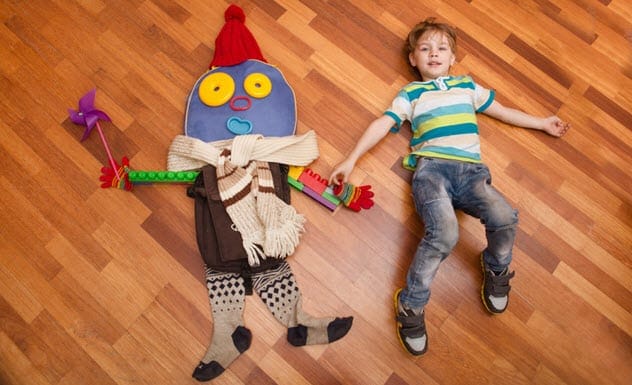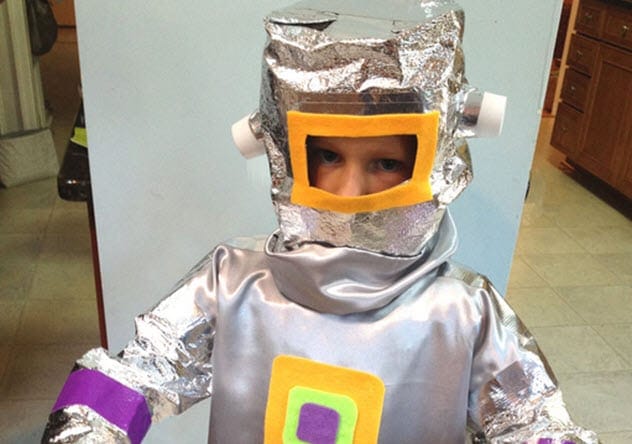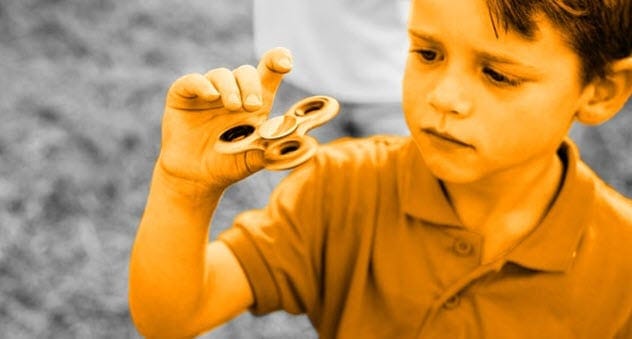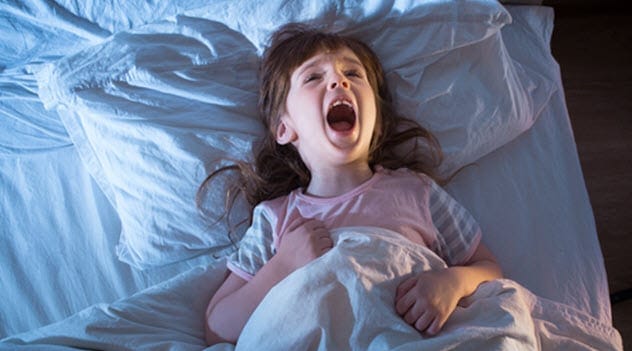Childhood is often seen as a magical chapter filled with imagination and creativity. Kids are encouraged to dream big and explore their fantasies. But as we grow up, society often discourages these behaviors, sometimes even viewing them as odd or inappropriate for adults.
Many actions that are perfectly normal in children can be misinterpreted as signs of mental health issues in adults. Interestingly, some adults still engage in these playful activities but keep it hush-hush, afraid of being labeled as strange. Let’s dive into ten common childhood behaviors that raise eyebrows when adults do them.
They Have Imaginary Friends

Many young children create imaginary friends. Sometimes, it’s hard to tell if they’re just playing pretend or if they truly believe in these companions only they can see. These friends can be invisible or even personified objects like stuffed animals.
Researchers at the University of Oregon estimate that around 37% of children have had an imaginary friend by the age of seven. These friends can appear as humans, animals, or even fantastical creatures. When these invisible friends are human, boys tend to imagine male friends, while girls have friends of both sexes.
Contrary to popular belief, these friends aren’t always a sign of loneliness. Many children actually develop strong social skills through these imaginary friendships.
However, the imaginary friends themselves can be a bit mischievous—sometimes not showing up when called or getting blamed for messes. Despite this, researchers have found that even young children are aware that their invisible friends are “just pretend.”
While an imaginary friend is normal in childhood, it can be a cause for concern in adulthood, especially if someone believes the friend is real. Adults might act out conversations or role-play with an imaginary companion. If they believe these friends are real and the friends talk back, it could be a sign of schizophrenia.
They Think They Can Fly

Many children recall having vivid memories of flying.
Some kids can describe the sensation of flying and the things they saw and did while airborne. Others develop a strong belief that they can fly but have simply forgotten how.
In adults, this belief can be a symptom of psychosis. A tragic example is the case of 17-year-old Henry Kwan, who, under the influence of synthetic LSD, believed he could fly and tragically jumped from his balcony. This highlights how dangerous such delusions can be.
This is a particularly dangerous delusion, and sufferers are advised to seek help to manage the condition.
They Believe They Are Someone Else

It’s common for children to adopt different personas. Role-playing is a crucial part of a child’s development, allowing them to “try out” various characters. Pretending to be an astronaut or a fireman, for example, helps children practice predicting others’ actions and thoughts.
While playing, kids often believe they truly are the astronaut or fireman. For most, the game lasts only a short time, but some can become quite elaborate and extended.
However, when adults believe they are someone else, it may signal dissociative identity disorder (previously known as multiple personality disorder).
This disorder often stems from repeated trauma, such as domestic violence or sexual abuse. The brain tries to protect itself by creating another personality to distance itself from painful experiences and the fear of them recurring.
Studies show that up to 99% of patients with dissociative identity disorder have experienced recurring, overwhelming, and life-threatening events.
They Think They Can Levitate

Many children believe they have levitated, often describing floating down the stairs. Whether they’re confusing dreams with reality or it’s another form of fantasy, the belief in levitation is common in childhood.
This phenomenon isn’t new. Samuel Pepys even wrote about a childhood levitation experience in his diary in 1665, then considered evidence of supernatural forces.
Adults, too, can experience the illusion of floating, often as an out-of-body experience. This might occur during a medical procedure, where a patient feels as though they’re floating above themselves, watching the medical team work.
For most, these episodes aren’t harmful and can even be positive. However, prolonged out-of-body experiences might indicate a depersonalization disorder, where someone feels disconnected from their body and thoughts.
They Think They Are Robots

Robots fascinate children, who are often intrigued by the idea of something that looks and talks like a human but isn’t. Young kids enjoy pretending to be robots by walking mechanically and speaking in stilted, robotic voices.
However, some people with depersonalization disorder have distorted perceptions that make them feel like robots. They believe they are machines unable to experience emotions.
This condition is often mistaken for depression. Though distressing, it is usually temporary, but symptoms can recur without treatment.
They Believe They Have Special Powers

Young children often believe they possess special or secret powers. It’s hard to say if this comes from movies, TV, or an innate childhood belief. Some experts believe this superhero fantasy gives children a sense of control and helps them develop patience, helpfulness, and confidence.
However, believing in superhuman powers as an adult can indicate delusions of grandeur. This delusional behavior might manifest as believing you’re secretly the heir to the throne or a celebrity in disguise, and these delusions can persist for a long time.
One psychiatric journal told the story of a man who, for 25 years, believed he was an internationally renowned secret agent who altered global military strategy at age eight. He also thought he controlled the US Army with his mind and single-handedly coordinated Kuwait’s liberation.
This man convinced his wife and child he was a super-powered James Bond, a case of folie à trois, where multiple people share the same delusional beliefs.
The man claimed to have been paid over $100 million for his efforts by grateful countries. But when he tried to withdraw the money, the bank said the funds didn’t exist.
He believed that when foreign countries approached him for his intelligence, and he refused, they retaliated by denying him planning permission for his house. Though the delusions seem absurd, sufferers genuinely believe them to be true.
They can’t distinguish between fantasy and reality, even while fabricating “proof” for others. Such conditions may be a symptom of schizophrenia or bipolar disorder.
They Do The Same Thing Repeatedly

Children thrive on routine. It’s normal for a child to want to watch the same movie, read the same book, or play with the same toy over and over. Younger kids can get upset if their routines change even slightly.
Adults also enjoy familiarity and routine. However, when routine becomes paramount and disrupts normal life, it can become obsessive-compulsive disorder (OCD).
While a child might want the same bedtime story every night for comfort, an adult who needs to read the same page repeatedly to ensure they haven’t missed anything is unlikely to feel comforted.
OCD can take up an increasing portion of each day, as sufferers repeat activities until their anxiety subsides. Experts say these checking rituals can last up to 10 hours a day for people with severe OCD, severely limiting their life opportunities.
They Have Night Terrors

Children, usually between 4 and 12, sometimes experience night terrors. Though kids usually remember little about these episodes, they can be distressing to witness. Night terrors usually start 2–3 hours after the child falls asleep. The child might sit up, try to get out of bed, scream, and appear panicked. They’re also likely to be breathless, sweaty, and have a racing heart.
Night terrors are often temporary, with most children experiencing only a few episodes, though they can occur more often. They usually happen if the child is overtired or sleeping in a new place.
In adults, night terrors can be more serious. Adults who experience night terrors are more likely to have mood disorders like anxiety, depression, or bipolar disorder. There’s also a link between night terrors and post-traumatic stress disorder. Though generally not dangerous, the underlying causes often require treatment.
They Are Fussy Eaters

Babies and toddlers often develop food fads, refusing to eat anything except a small group of foods or rejecting anything new. This is frustrating for parents, as most foods are new to young children. However, it’s usually a phase that lasts only a few years.
Some people, however, continue to obsess about food into adulthood, which can severely impact their mental and physical health. Conditions like anorexia and bulimia are well-known, but others suffer from lesser-known issues.
With rumination disorder, sufferers feel compelled to regurgitate and rechew their food. Another problem is avoidant/restrictive food intake disorder, where people don’t eat enough to meet their nutritional needs but aren’t worried about their weight or body shape.
These conditions can negatively affect overall quality of life.
They See Monsters Under The Bed

Almost every child is scared of monsters under the bed or in the closet at some point. Despite the terror induced by movies like Monsters, Inc., the fear of something dangerous hiding in the dark usually disappears by puberty.
Teraphobia (the fear of monsters) affects almost 100% of kids but few adults. Temporary teraphobia can be caused by scary movies or ghost stories, but this generally fades in a few days.
For some, however, the terror persists. Like all phobias, this can affect quality of life. Treatment includes antidepressants and cognitive-behavioral therapy.
Therapists often suggest leaving a light on.
Many behaviors that are celebrated in children are viewed as potential mental health disorders in adults. This list shows just how different the world is for children and adults.
What do you think about these differences? Leave your comment below!










